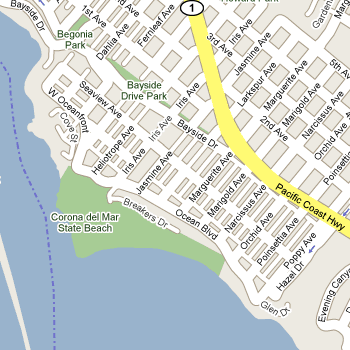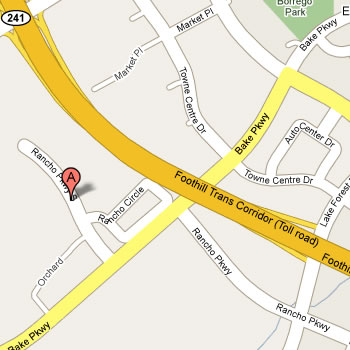BIKE MS: BAY TO BAY TOUR
Felicia Jones
 If you are wondering what dumb thing I am doing now, here it is . . .
If you are wondering what dumb thing I am doing now, here it is . . .
Why am I doing this (the Bike MS: Bay to Bay Tour on Saturday, October 10th/11th)? Felicia isn’t THAT kind of cyclist! I do understand that this is probably beyond my normal riding capabilities, but who am I to turn down a challenge?
This is a race in support of someone I greatly admire and wish that everyone can one day have the pleasure of meeting. Lynette is the spouse of a teammate and is a woman whose magnetic spirit always stays with you. Dave and Lynette have been fighting MS together for many years and in honor of the love and devotion the two have for each other (high school sweethearts, and still sweethearts) I want (and need) to ride. Dave and Lynette are great examples for how each of us should live our lives and love those that are a part of it.
I am really riding this grueling race because Lynette can’t. AND if she could, she would probably beat Dave.
I understand that times are tough, but I would appreciate if you could donate even a few dollars (you don’t have to post an amount on the page). If everyone donates just one dollar, and I send out 1,000 emails . . .
So, since I don’t like to ask people for money, I have come up with a way to reciprocate for those that are eager to donate. Here are the donation levels:
$25 “Hungry Hippo” – You will receive 1 dozen homemade chocolate chip cookies or 1 pint of homemade salsa. You must be semi-local for delivery.
$30 “The Chef” – You are invited to a cooking class at my house where you learn how to bake chocolate chip cookies and make the infamous “Felicia’s Salsa.” Wine will be served, of course.
$50 “Wax On, Wax Off” – I will come to your home, if you are semi-local, and wash your car. This includes external washing, shine on the tires, and the windows. (Only one car, SUVs and minivans extra.)
$75 “Auntie Daycare” – I will watch your kids for 3 hours. This only includes your kids and a date will have to be negotiated. This only works if I live within 2 hours of your home or make a habit of coming to visit where you live (that is pretty much everyone); and that I like your kids.
$100 “Place Your Ad Here” – Body marking. Yes, there it is, I said it. I will post an ad for you, on my body, on race day. Now, this is limited to space (legs and arms only), and will have to be re-applied for the second day of the race (I plan on showering). This can be drawn by you, me, or my team members the morning of the race. I will supply minimally 4 marker colors (black, red, green, blue), but it must be something that I can show to my grandmother.
$150 “In Your Face” – You will be invited to watch the race (Day 1 Carlsbad, Day 2 San Diego) and to laugh and take pictures as I come crawling across the line. Sign making materials will be provided for you to express yourself to the racers (i.e. “Felicia is da bomb!” or “Only 80 more miles to go!”) Those that make it to Carlsbad are invited to stay in the beautiful Carlsbad Residence Inn for the night and wish us well the next morning. Continental breakfast will be served.
$200 “You Have Got to be Kidding?” – At this donation level I will deliver a singing telegram from you to a recipient that is semi-local. This could include costume and, of course, dancing and clowning around. You must understand that the only songs I know all the words to are “Happy Birthday” and some Christmas carols, but I am sure we can work something out.
If you don’t want to take advantage of any of these prestigious parting gifts, any amount you are willing to donate will be greatly appreciated.
Anyone want to join me for a ride?
NEWBIE NERVOUSNESS
Ron Saetermoe
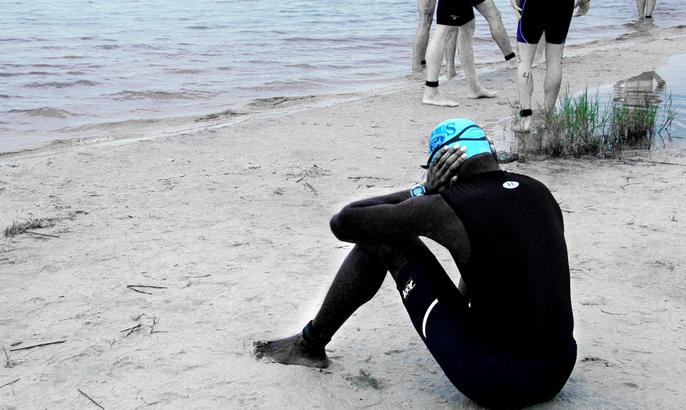
The terror on the “newbie’s” face is humorous. That’s because the terror is on someone else’s face, not mine.
Many new triathletes (newbies) seem to have come to the sport in similar ways – one of their “friends” coaxed them into it. That’s how I started, and to this day I can’t thank Greg Fitts enough for the encouragement.
The problem is that most come to the sport ill prepared. Sure, there are coaches and triathlon clubs out there, and great organizations like Team in Training, but most new triathletes enter the sport without a lot of guidance.
Granted, the vast majority of newbies just want to survive their first race, but secretly I think they also want to feel good about their performance. That’s where a good coach comes in. A good coach will help get you physically and mentally ready for your big race.
Triathlon is very simple, but very complex at the same time. I mean, who would think it would be so darn hard to put on your singlet when you’re wet? Some day I’m going to shoot video in the transition area of a race and put together a “Funniest Transitions” video. It is hilarious.
Triathlon is simple because all you have to do is swim, cycle and run. Even the most unfit amongst us can “complete” a triathlon, whether they believe it or not. However, getting beyond just surviving takes much more.
Here are a couple tips:
1. Get a coach: Of course I’m going to say that, right?
2. Read: There are a ton of books and magazines out there. Triathlete magazine and Competitor magazine have great articles for the newbie. www.beginnertriathlete.com is another great resource. I also like the Wes Hobson book called Swim Bike Run.
3. Get a plan: If you just go out and swim, bike and run without a plan you’ll never reach your full potential. I’ve posted my “ideal” workout week here before and I really try to stick with it.
4. Measure your performance: Periodically do “marker sets” which is a particular workout you do at different times of your season to see how much you’ve improved (more in this newsletter).
We’ll be starting a newbie triathlon camp here soon so stay tuned for more information on that.
Cheers!
FREE GROUP WORKOUTS (Week of September 28th)
All of our group workouts are free to members and non-members, so come on out!
We want everyone to enjoy our group workouts but we should clarify the intent. The intent of the group workouts is to “workout.” Yes, it includes a social element. Yes, your Triathica host is happy to give you tips. But please be aware that everyone there is attempting to get a workout in at his or her own pace. If we all go at the slowest person’s pace many people won’t be getting in a proper workout. We will attempt to pair you up with another athlete so you’re not left alone.
Week of September 28th
Event: Group Swim
Place: Triathica flag at Big Corona near the lifeguard station next to the jetty
Day: Wednesday, September 30rd
Time: 5:30 p.m.
Planned Workout: 1 – 3 loops around the buoys
Event: Group Ride
Place: Triathica HQ
Day: Saturday, October 3rd
Time: 7:00 a.m. (back to the regular time)
Planned Workout: 1- 3 loops of the Canyon
Event: Group Run
Place: Triathica HQ
Day: Sunday, October 4th
Time: 7:00 a.m.
Planned Workout: 9 miles in Whiting Ranch
PETE AND CORRINNE UPDATE #13
Jarrett Pflieger
The week leading up to the OC Tri was not a typical training week for Corrinne, it was mostly a lot of rest. She was able to get a massage on Monday and a chiro adjustment on Tuesday. She and Pete were also able to attend the Triathica course talk on Tuesday night, which they agreed, “provided key race insight.”
Pete was also able to taper the last week and take it easy, besides an unexpected 10-mile hike on Wednesday through the local mountains, searching for a lost trail runner, Gina. “After being out there with 100 plus degree temperatures for three plus hours, I was pretty cooked,” said Corrinne. She did replenish her lost fluids, but still felt a bit tired. She hoped that a few days of active rest would have her ready by race time.
I saw both Pete and Corrinne at transition on Sunday morning. They seemed excited and anxious to start, but not really nervous at all. It must be the ultra-runner in them.
Corrinne’s wave went off second and Pete’s was 5th. The water was too warm for wetsuits, so they both decided to go without them. For Corrinne, the swim was much longer than she thought. “I usually breathe every four strokes, but I was so pumped up from andrenaline and all the thrashing going on around me that I had to breathe every other stroke.” She planned on staying to the left to avoid congestion around the first right turn bouy, but apparently, so did everyone else. She was scared about re-injuring her broken wrist, so she finally found some clear water right in the middle of the swim course, of all places, and was able to settle down and get into a nice pace.
She finished the swim then unfortunately had some problems on the bike. She felt some rubbing going on in the back wheel area, and thought she might have a flat or some brakes rubbing. She got off the bike at one point to check, and the brakes were rubbing a bit on the rim. She was unable to adjust them out on the course and had to push through the extra resistance caused by the brake. Because of that, she believes her run suffered. “While I was riding I somehow pulled my groin muscle. The combination of the pulled groin and the exhausted legs didn’t lead to my best run,” she said.
Pete was also a bit dissappointed in his run time, but I think a lot of people were disappointed in their run on Sunday. It got hot pretty fast and it is a very hilly course. “Both Corrinne and I have run and biked the course many times before the race and I know we could have easily done better. I think it was just a combination of several small things that led to a disappointing performance. There is always next race,” Pete explained.
Overall, Pete and Corrinne both had a blast and are looking foward to their next triathlon. The most important thing is that they finished and had fun while doing it.
Results: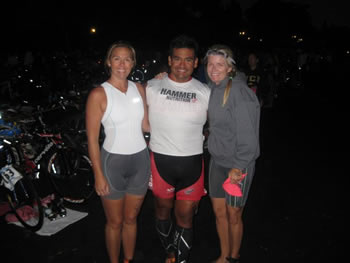
Pete – 2:48:03
Corrinne – 3:14:08
RACE REPORT: ITU SPRINT TRIATHLON WORLD CHAMPIONSHIP
Sara Davis
When I arrived in Australia I was in a state of total disarray. I didn’t know exactly where I was staying, where the heck I was and how I was going to get to the race. I had made a bunch of quasi-plans but nothing very specific, that’s just the kind of traveler I am. When I got the airport, I decided to check my email to see if one of my contacts had emailed me. Yes, my Australian contact Jess was planning on picking me up at the train station in Nerang. I had to figure out how to get on a train and find a girl I have never met before. Everything worked out to say the least.
I ended up staying with a bunch of Surf Rescue athletes from Australia who live on the Gold Coast primarily to train for Surf Rescue competitions. It was great. They were in bed by 8:00 p.m. and up by 5:00 a.m. which was a perfect schedule for me. I decided to go to swim workouts with them where I swam in a swim group with Emma Snowsill, Olympic Champion! No, I couldn’t keep up, but that’s beside the point. It was awesome!
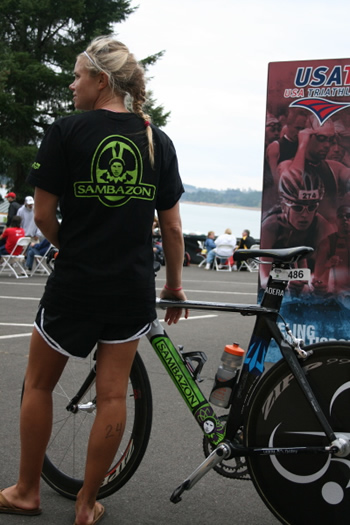 As it came closer to race day, I wasn’t even nervous, I don’t know what it was, but I was just really excited. With my disappointing finish at Nationals, I had a small lack of confidence and did not to expect to finish well. Then something changed, a fire started to burn in my stomach and I got really pumped up. The day before the race I decided I was going to have the race of my life. I wanted to push myself so hard that I would want to collapse after the finish, which is hard to do on such a short distance. My goal that I set was being the first American in my age group.
As it came closer to race day, I wasn’t even nervous, I don’t know what it was, but I was just really excited. With my disappointing finish at Nationals, I had a small lack of confidence and did not to expect to finish well. Then something changed, a fire started to burn in my stomach and I got really pumped up. The day before the race I decided I was going to have the race of my life. I wanted to push myself so hard that I would want to collapse after the finish, which is hard to do on such a short distance. My goal that I set was being the first American in my age group.
Race morning came quickly. As always, it was easy to wake up because I really don’t sleep before big races anyway. I pretty much just lay there staring at the ceiling. I had my peanut butter banana honey toast, put on my red and blue Team USA tri-suit and hitched a ride to the venue.
The transition area was huge. We had to rack our bikes the night before so there wasn’t much for me to worry about. I was light and cheery in the morning, cracking jokes, pumping my competitors tires for them because they couldn’t figure out how to do it (weird). I got my wetsuit on and I was ready to go.
I got on the start line with my competition, put a little spit in my goggles and started fooling with my watch to get it to go. Bang! There went the gun. Oops, wasn’t quite ready. I sprinted into the water, dolphined a couple times, and I was off swimming. I have never felt a real draft in the swim until now. I got right on the toes of a girl in front of me and drafted the entire swim, coming out of the swim I felt fresh. I had no idea where I was at this point getting out of the water into transition, later I found out I was in 26th position.
The run to transition was relatively long; I did some passing on the way, got to my bike and was out of transition onto my bike in record time. During the bike all I was doing was passing; I was passing girls my age, younger girls, then all of a sudden I was passing boys. I looked down at my Garmin and I realized I was going 24-25 miles per hour, without a disk wheel. I was hauling. Not one person passed me on the bike. After the bike I was in 14th position. I passed 12 girls in my age group during the bike.
I had another quick transition and made sure to grab my Garmin watch for the first time when I raced. I wanted to keep track of how fast I was running. I wanted to always keep my pace under 6:45 minute miles. During the run I played fishing games. I would pick someone out in front of me and just reel them in, keeping my pace around a 6:30 minute mile and watching my distance to see how far along I was. Once I hit around 800 yards left I started sprinting, passing people left and right. Since it was an up and back course I could tell that I was the first American. One of our USA coaches handed me a flag and I got to finish with the US flag in hand. I had never felt so good; I had goose bumps, as I was finishing. With the crowd cheering and the music blaring, it was exactly what I had imaged when I was dreaming of it.
I got 10th place overall and 1st American! For the first time EVER I felt like I was going to lose my breakfast at the finish line. It felt good to push it that hard and I think that it was the first time I felt so proud of myself after a race this year. So my Australia trip was a success. Thank you so much to everyone that helped and donated to help me get to Australia!
INDOOR CYCLING: THREE THINGS YOU NEED TO KNOW
Jarrett Pflieger
I like training outside, especially on the bike. I like scenery, I like the wind rushing against my face, and I like going fast. Although I enjoy the feeling of being outdoors, I’ve noticed my workouts are not nearly as effective as when I train indoors on a CompuTrainer or a spin bike with a power meter. A one-hour ride indoors for me is comparable to two to three hours riding outside.
Training outside can be fun and there is definitely a need for it in any good training plan, but those that train exclusively outdoors are missing out on opportunities to increase their cycling performance. When you ride outside, there are many variables that can keep you from having an optimal workout. It’s also very easy to not push yourself as hard as you should for maximum performance gains.
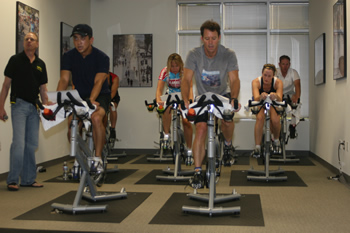 So what is so beneficial about indoor training anyway?
So what is so beneficial about indoor training anyway?
1. Controlled environment
Indoor training allows a rider to control their surroundings. No extreme temperatures, cars, wind, flat tires, and stoplights means you can get a great workout in, every time. It’s also a lot safer.
You can buy or create workouts with sets and intervals that work on specific parts of your cycling repertoire, such as endurance, speed, or power. Since your environment is always the same, it is very easy to track your workouts week-to-week and see if you are getting better, and if so, in what areas. It is very difficult to do a structured workout outdoors with constantly changing terrain. Even comparing your times on the exact same bike route can be skewed by changes in weather, stoplight sequences, flats, wind etc. Just like track workouts for running, indoor cycling sessions are an important part of any athletes training plan.
2. Save time
Training indoors is more intense than riding outside since there are no distractions. It is just you and your bike; so you can really focus on your pedaling efficiency, power production (if you have a power meter), and exertion levels. Riding outdoors usually involves frequent stopping for lights, cars, and many will take it easy on the down hills. Indoor training eliminates this and ensures you get the best workout you can in the shortest time possible.
3. Get better, faster
What would happen if every time a body builder went to the gym, he didn’t really have a plan besides knowing he would lift for about an hour? Would he get stronger and bigger over time? Of course. Could he get bigger and stronger in less time if he had more structure? Absolutely. Obviously the goal here is not to get bigger, but it is to get stronger, faster, and more efficient.
All the time I hear people say, “I have to go ride fill in the blank miles today.” Don’t get me wrong, you do need to make sure you get enough miles in to get your body used to the distance, but people rely on “the miles” too much. Just because someone goes out and rides 60-miles doesn’t mean they got a great workout. It is very possible to have a five- to ten-mile workout that is much more intense and benefits the athlete more than a long and slow 60-miler. As with most things, quality is better than quantity.
Training indoors allows the athlete to have structure and really focus on what they want to accomplish. It may get a little boring, but there are ways around that. Crank up some music on your stereo or MP3 player. Don’t like training alone? Take a spin class. If you hate staring at the wall, look into a CompuTrainer or get some quality cycling DVDs that can guide you through a workout. Keep training only outdoors if you are just doing it for fun. If you really want to be a better cyclist, consider adding a healthy dose of indoor training to your training schedule. What better time to train indoors than the winter off-season?
INTRODUCING THE TRIATHICA ACADEMY
Ron Saetermoe
The best part of being a coach (at anything I guess) is the satisfaction you get when you can see your student’s performance improve. Since we started Triathica in June, I’ve had the privilege of helping a number of athletes in their triathlon endeavors. Their feedback means a great deal to me.
In October we’re starting a new division here at Triathica called the “Triathica Academy” which is the arm that will focus on athletic performance improvement. Simply put, all of our personal training, camps, clinics, classes and multi-media will be under this umbrella.
We’ll be introducing the Triathica Academy to Orange County, and the world via the internet and local media. Look for our advertisement in the November issue of Competitor Magazine.
Eventually, the Triathica Academy will include a membership of its own. Current Triathica club members will be able to add an Academy membership to their basic membership for a small additional fee. “Remote” customers will also be able to join the academy without having a club membership.
Our first Academy offerings will be an exercise DVD and a camp for triathlon newbies.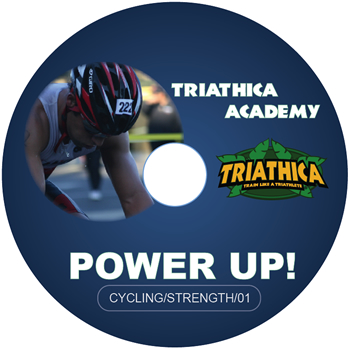
We shot the DVD several months ago and have recently just finished editing it. It’s a spin workout that can be done on a stationary bike, trainer or CompuTrainer. We call it “Power Up!” because it’s a cycling power workout. We break all of our workouts here at Triathica into one of four types: power, endurance, speed or recovery.
Power Up! is a 60-minute workout designed to help build your leg strength to climb hills and power through the wind. We keep increasing the watts in this workout while decreasing the cadence. It’s a real quad buster!
Watch for more information of this great training tool.
The newbie camp will be a comprehensive triathlon training session conducted over a weekend for those athletes that have never raced before or feel like they need to develop some additional basic skills.
Again, watch for more information on this exciting camp.
RACE REPORT: LONG BEACH SPRINT
Ron Saetermoe
As I’ve written before, I really enjoy doing the same races year after year. Some may get bored with that but I like it so I can see if I’ve improved over the years. Generally, I have.
I’m in the throes of training for Ironman Arizona now so I can’t afford to miss any of my regularly scheduled training so the day before Long Beach I did my normal bike/run brick. Needless to say, I wasn’t expecting much on Sunday.
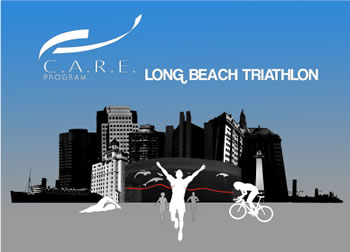 It was a beautiful day and the water in the Long Beach bay was a brilliant red (LB is a great race for the non-swimmer because it’s calm – it also collects a lot of gunk).
It was a beautiful day and the water in the Long Beach bay was a brilliant red (LB is a great race for the non-swimmer because it’s calm – it also collects a lot of gunk).
I got out quickly and only saw a couple guys ahead of me in my wave. I settled into a nice quick pace and found a guy to my right swimming the same speed as me. The funny thing was that I only breathe to my right, and he only seemed to breathe to his left. As a result, we looked at each other for most of the swim.
I got out of the water feeling fresh and found two other guys in my age group only a step or two ahead of me. The run through the sand seemed to take forever but I was quick through transition and beat the other two guys out.
I never did see the one guy again until after the race but this 52-year-old dude (I’m in the M50-54 AG) passed me going up the first hill on the bike. I easily caught him going down the hill and stayed ahead of him on the flats, but he was gunning for me.
He passed me going up another small hill but I kept him in my sights. This time when I passed him I said as I went by “You really didn’t think you dropped me did you?” His reply was “You f***er!” in a joking tone.
We passed each other several more times through the bike section and he just beat me into transition slightly. I beat him out of transition, however, and headed out for the flat, fast run.
It wasn’t long before he passed me . . . probably ½ mile into the run. I contemplated trying to go with him but he was just too fast and my legs weren’t fresh. I saw him at the turnaround and waved the “shaka” wishing him good luck.
That’s how we finished, he took first, and I took second with a time of 1:04:51, my fastest time at LB by about four minutes!
I collected my silver medal, signed some autographs and went home for a power nap.
By the way, Triathica also had several athletes competing. Mauro, David, Byron, Joe and Janet all raced for the first time at L.B. and all did great! I’m proud of you all!
Chris McCormack (Macca) raced as well. He did okay!
MY SWIM WORKOUT
Ron Saetermoe
Let me start by saying that I’m not a great swimmer, but I am good. I’m good because I started swimming competitively when I was seven years old and continued to do so until I got sideways with my high school swim coach when I was 17.
When I got to college I thought it would be cool to try out for the swim team. I went to one of their practices just to check it out and realized they were waaaaay beyond my abilities so I just continued to swim for exercise and fun.
When I took up triathlon in 1983 I realized I didn’t have to be a great swimmer but it sure did help being good. In recent years I’ve developed a system that works for me, and it may work for you too.
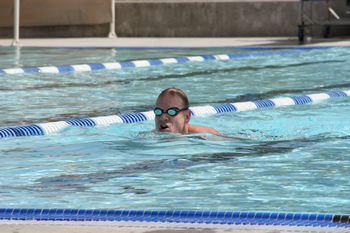 Now I don’t want to get sideways with all of the masters swim programs, but I probably will anyway. In my opinion, masters swim programs aren’t teaching you how to be a good triathlon swimmer. After all, how many times do we swim 100 yards, then stop? Hopefully never.
Now I don’t want to get sideways with all of the masters swim programs, but I probably will anyway. In my opinion, masters swim programs aren’t teaching you how to be a good triathlon swimmer. After all, how many times do we swim 100 yards, then stop? Hopefully never.
Because of my cramped schedule and because I think long, continuous swimming is more beneficial for triathletes, I have developed the “Triathica Swimming System.”
Essentially, each workout includes long sets with very few rests . . . more congruent with triathlon racing. Each set includes easy to moderate efforts with bursts of speed. Here is my typical training program leading up to Ironman distance:
Adaptation phase: 3,000 yards as 200 moderate + 50 hard x 4 (no stopping between)
Repeat this three times with one-minute rest between
Base phase: 3,000 yards as 150 moderate + 100 hard x 4 (no stopping between)
Repeat this three times with one-minute rest between
Build phase: 3,000 yards as 100 moderate + 150 hard x 4 (no stopping between)
Repeat this three times with one-minute rest between
Race phase: 3,000 yards as 50 moderate + 200 hard x 4 (no stopping between)
Repeat this three times with one-minute rest between
You can see, as I near my race I begin to increase the “hard” yards which helps me build for my race. When my season ends I reduce my total yards as well as my hard yards. Give it a try sometime and let me know if it works for you.
Cheers!
SWIM CLINIC WITH TRISWIMCOACH
We invited Tri Swim Coach Kevin Koskella to organize a swim clinic at Triathica training center in Orange County, CA to do stroke analysis for some of our triathletes.
They were everything from beginner level to competitive, one of the participants, Julia was going to the world championships in Gold Coast, Australia in 2 weeks! (She went to the world championship and placed 3rd in her age group.)
We used the Endless Pool and were able to compare their underwater videos with what it should look like, and create DVDs for everyone to keep. They asked lots of great questions, and overall it was a fun and educational time.
Please check back to learn more about the next swim clinic.


